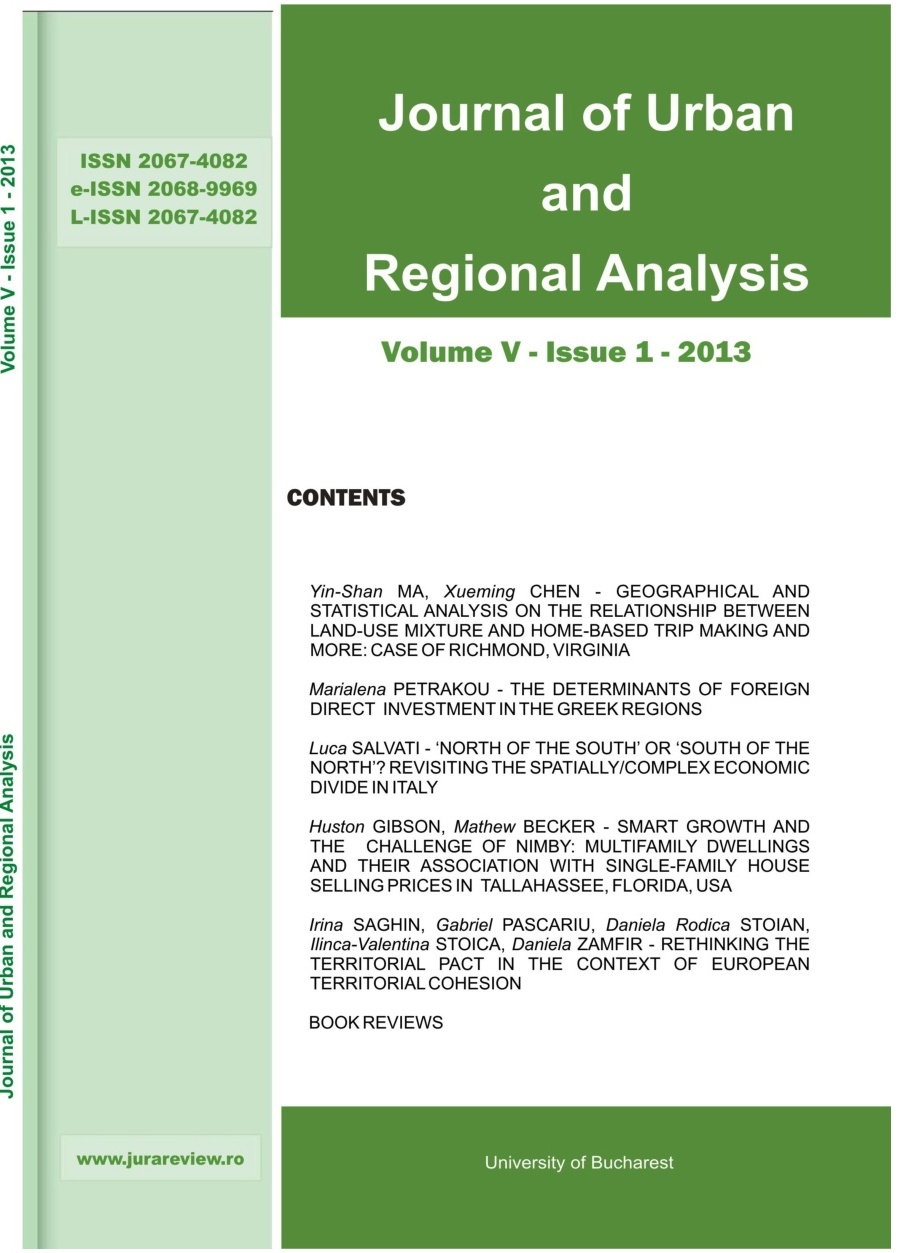GEOGRAPHICAL AND STATISTICAL ANALYSIS ON THE RELATIONSHIP BETWEEN LAND-USE MIXTURE AND HOME– BASED TRIP MAKING AND MORE: CASE OF RICHMOND, VIRGINIA
GEOGRAPHICAL AND STATISTICAL ANALYSIS ON THE RELATIONSHIP BETWEEN LAND-USE MIXTURE AND HOME– BASED TRIP MAKING AND MORE: CASE OF RICHMOND, VIRGINIA
Author(s): Yin-Shan Ma, Xueming ChenSubject(s): Policy, planning, forecast and speculation, Rural and urban sociology, Socio-Economic Research
Published by: Editura Universitară
Keywords: land-use mixture; socioeconomic variables; home-based trip rates; entropy index; dissimilarity index;
Summary/Abstract: Richmond, Virginia has implemented numerous mixed land-use policies to encourage non-private-vehicle commuting for decades based on the best practices of other cities and the assumption that land-use mixture would positively lead to trip reduction. This paper uses both Geographical Information Systems (GIS) and statistical tools to empirically test this hypothesis. With local land use and trip making data as inputs, it first calculates two common indices of land-use mixture - entropy and dissimilarity indices, using GIS tool, supplemented by Microsoft Excel. Afterwards, it uses Statistical Package for Social Sciences (SPSS) to calculate the correlation matrices among land-use mixture indices, socioeconomic variables, and home-based work/other trip rates, followed by a series of regression model runs on these variables. Through this study, it has been found that landuse mixture has some but weak effects on home-based work trip rate, and virtually no effects on home-based other trip rate. In contrast, socioeconomic variables, especially auto ownership, have larger effects on home-based trip making.
Journal: Journal of Urban and Regional Analysis
- Issue Year: 5/2013
- Issue No: 1
- Page Range: 5-43
- Page Count: 39
- Language: English

